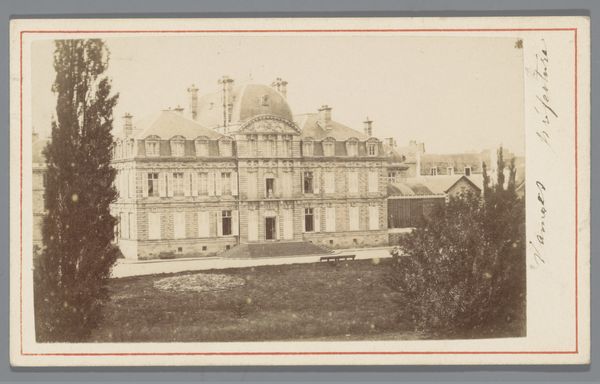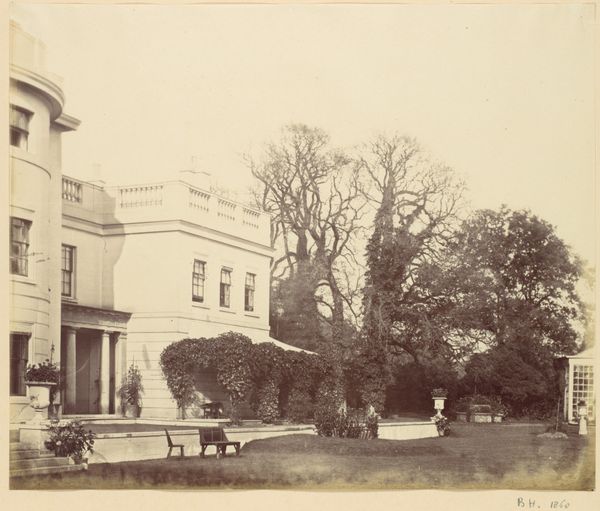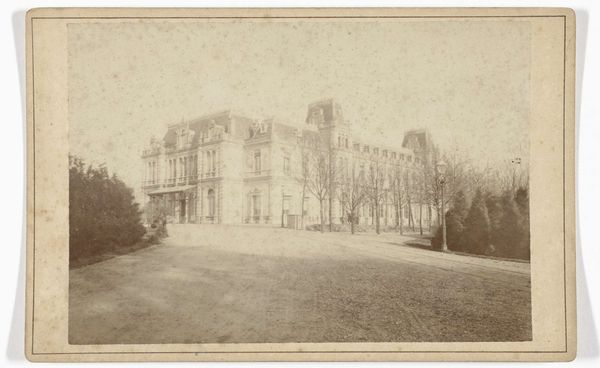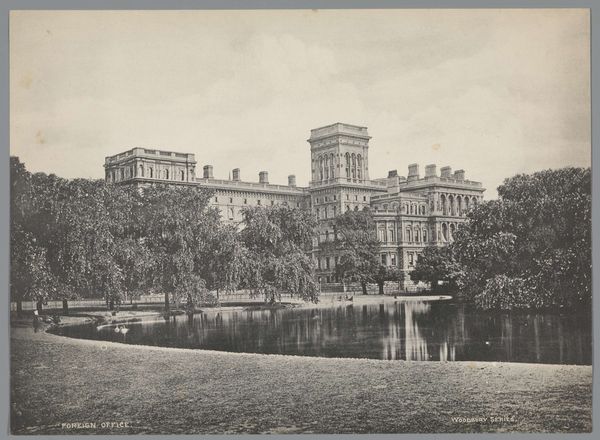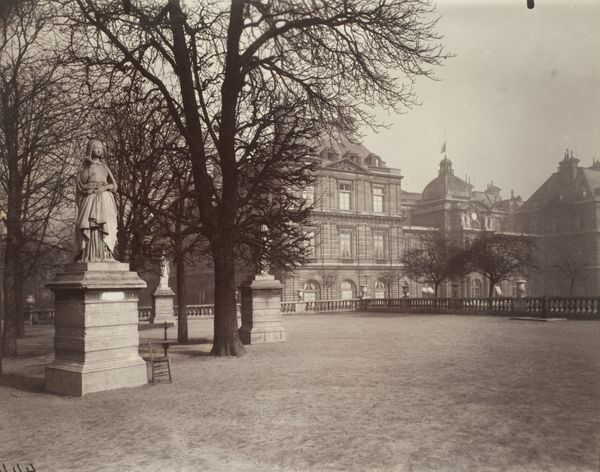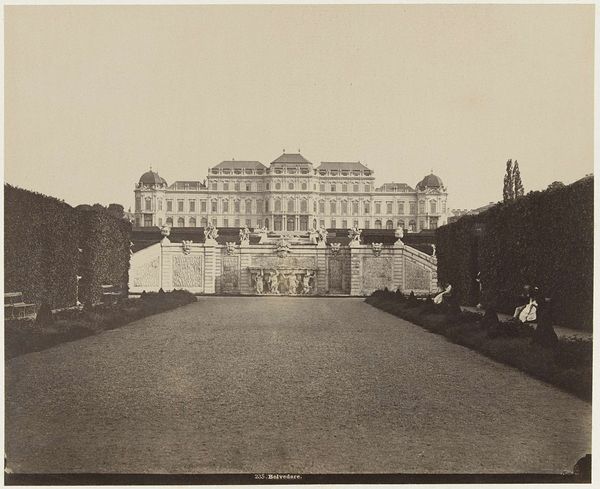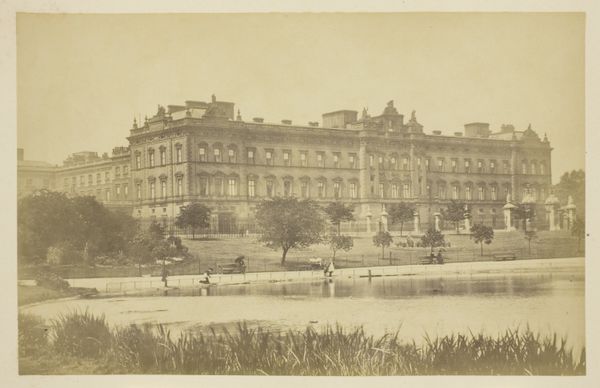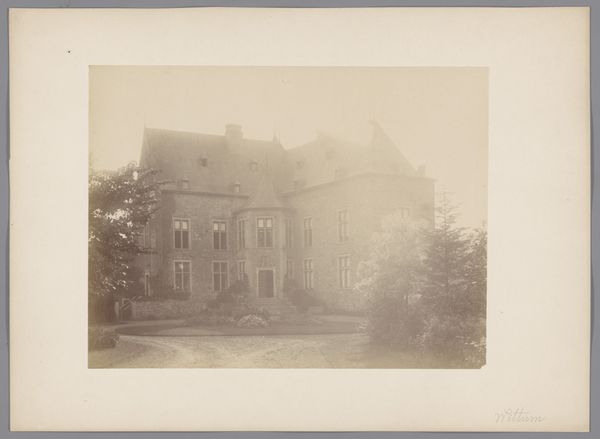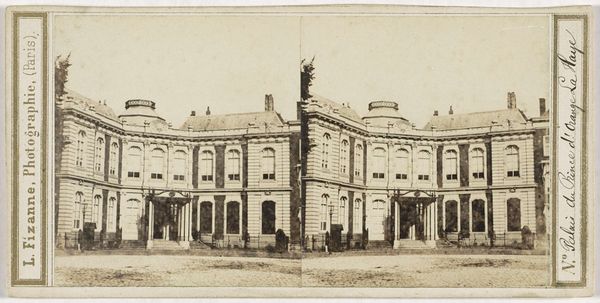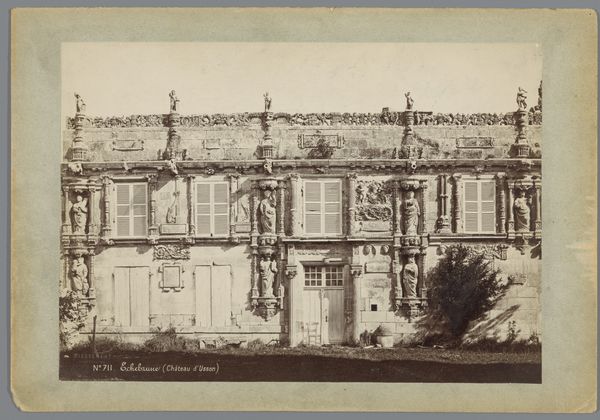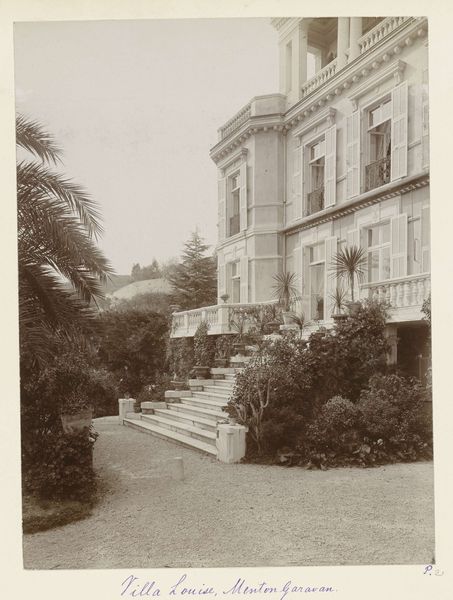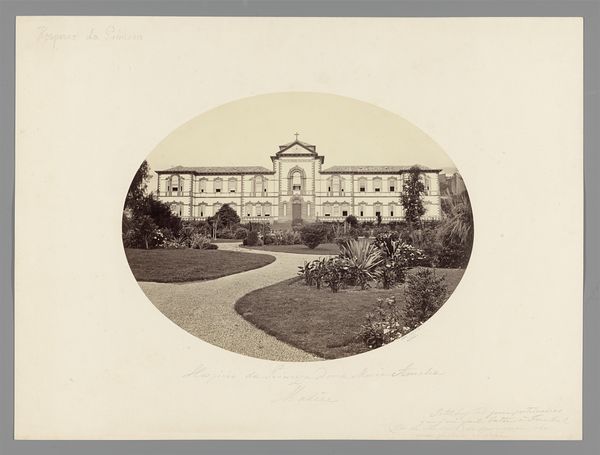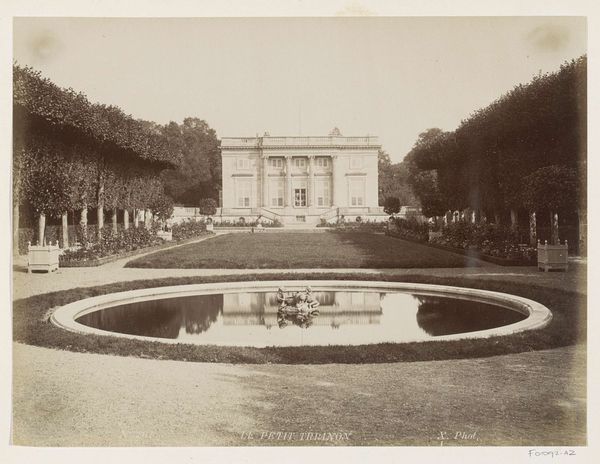
Dimensions: height 199 mm, width 287 mm
Copyright: Rijks Museum: Open Domain
Rudolph Tamme made this photograph of the Paleis in Grosser Garten in Dresden, using a process that was still relatively new at the time. Photography, from its inception, was deeply entwined with both science and industry. Consider the materials involved: light-sensitive chemicals, glass plates, and a precision-engineered camera. The process itself was painstaking, requiring meticulous preparation and careful execution. The final print, sepia-toned and finely detailed, captures not just the likeness of the palace but also the texture of the stone, the play of light on the facade, and the surrounding landscape. But beyond its aesthetic qualities, this photograph speaks to the rise of mass media and the democratization of image-making. No longer the preserve of the wealthy elite, images like these became increasingly accessible to a wider audience. Photography enabled the circulation of knowledge and the preservation of memory, transforming the way we see and understand the world around us. It’s a powerful reminder that even the most seemingly straightforward image is the product of complex social, technological, and economic forces.
Comments
No comments
Be the first to comment and join the conversation on the ultimate creative platform.
